From Watching to Living the News: How Communication Models Transform Journalism
SPRING QUARTER 2025
4/20/2025
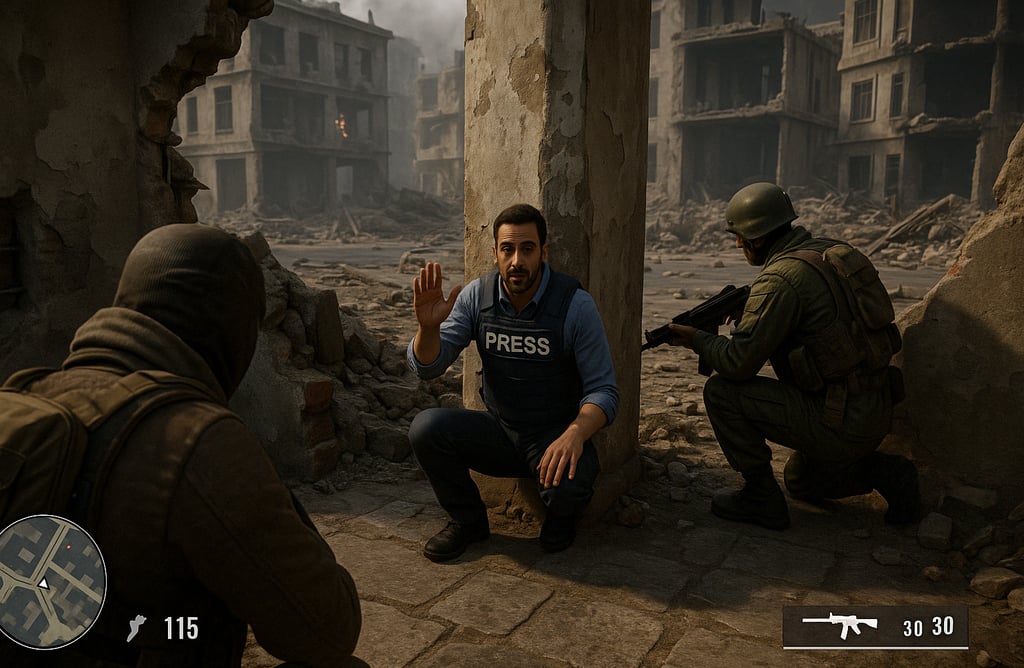

A New Kind of News – Spatial Presence Theory
Imagine this: you are not just watching the news — you are inside it.
This new kind of news lets the viewer feel like they are really there, in the middle of the event. This is called spatial presence. You don’t just see a picture—you feel like you are standing inside the scene. It’s more than a video; it’s a full experience.
Reporters in the Middle of Chaos – Double Mediation Model
In these images, the reporter is not in a studio. He is in the danger zone, hiding with soldiers or warning people about a storm.
This shows the double mediation model. The reporter is not only telling the news, he is part of the virtual world. He reacts to the event and helps the viewer understand and feel it emotionally.
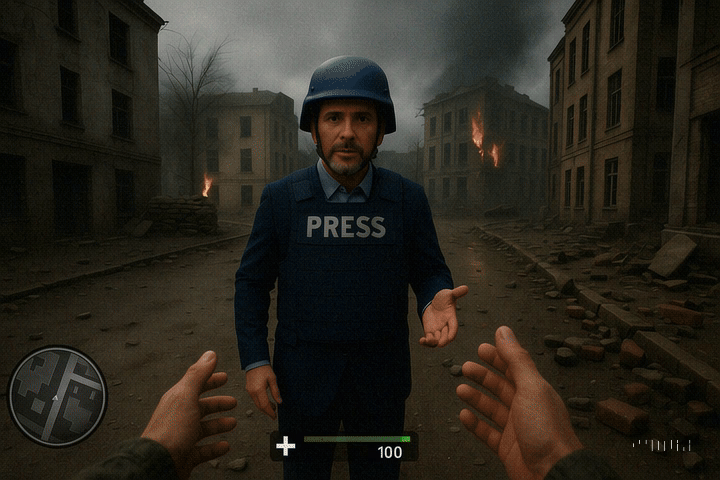

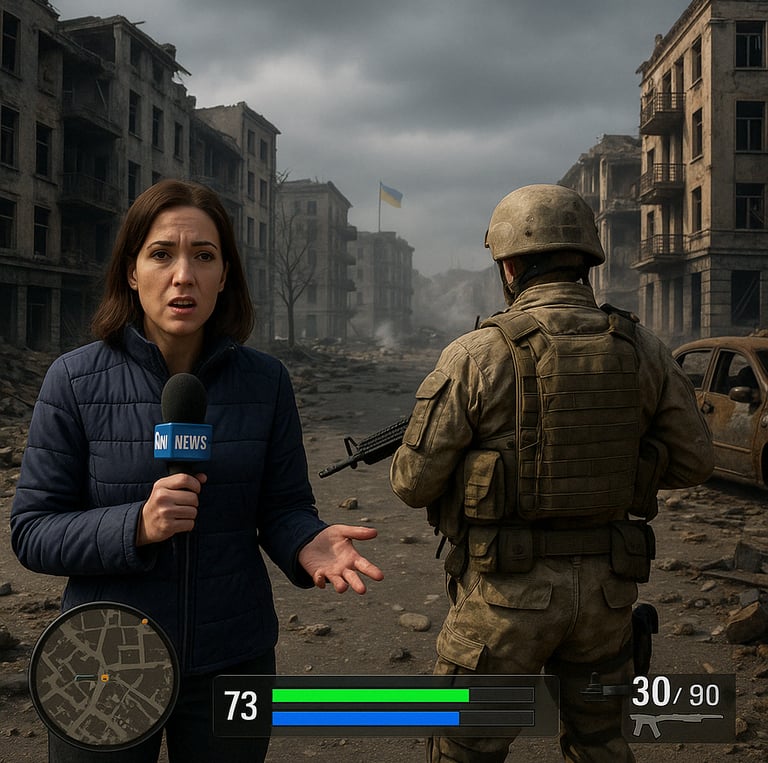

More Than a Speaker – Multi-layered Sender (Cognitive Bridging Model)
The reporter is not just reading the news. He walks with the viewer, gives advice, and waits if the viewer stops.
This is the multi-layered sender. It means the reporter has many jobs—he gives information, explains things, and connects with the viewer like a real person inside the event.
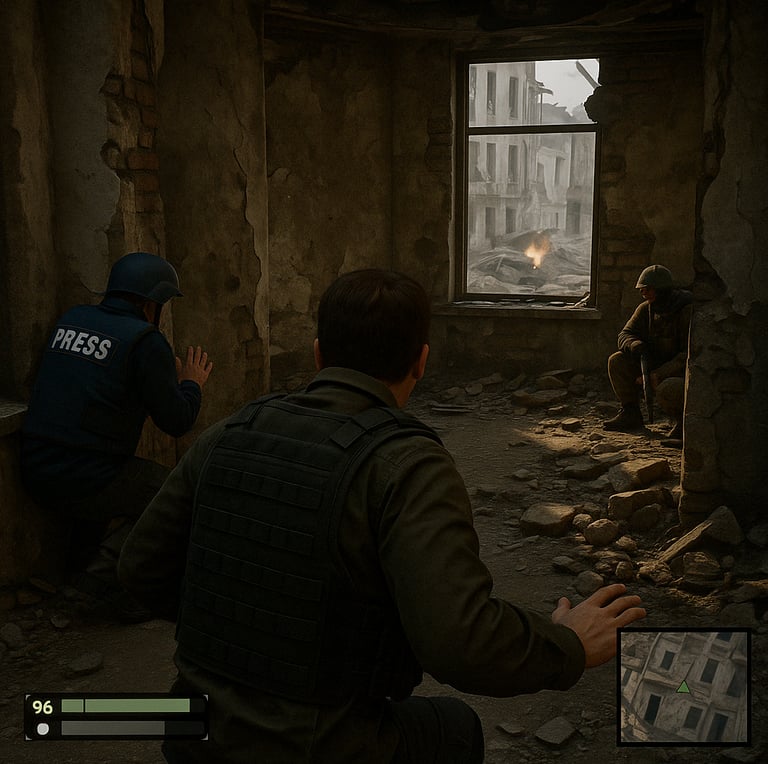

You Become the Character – Interactive Receiver (Immersive Interaction Model)
In this kind of news, the viewer is not passive. You can move, look around, and decide where to go.
You are an interactive receiver. You help shape the story by your actions. This is part of the immersive interactive communication model—you are not just watching, you are doing.
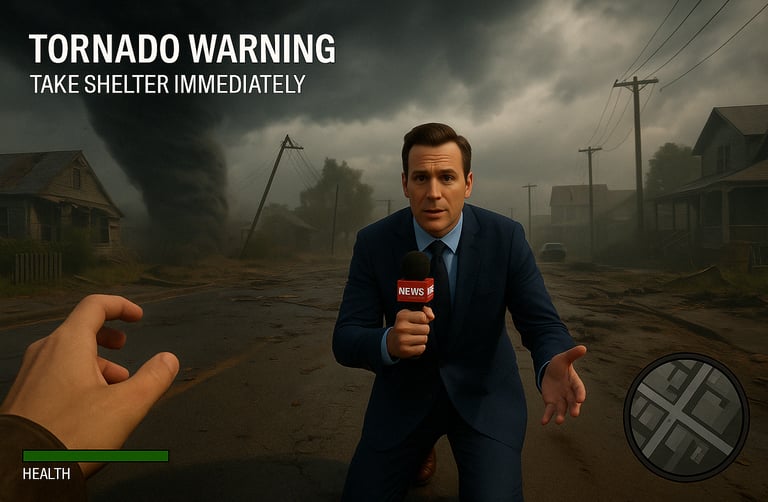

First-Person or Third-Person? – Self & Cognitive Presence (Flow + Presence Model)
Some scenes show the world from your own eyes (first-person). You feel very connected.
Other scenes show your body from behind (third-person), so you can see more of the world.
First-person helps with self-presence—you feel like it’s really you. Third-person supports cognitive presence—you think more and understand the full story.
This balance is part of the flow and presence integration model—you are focused, and you feel present.
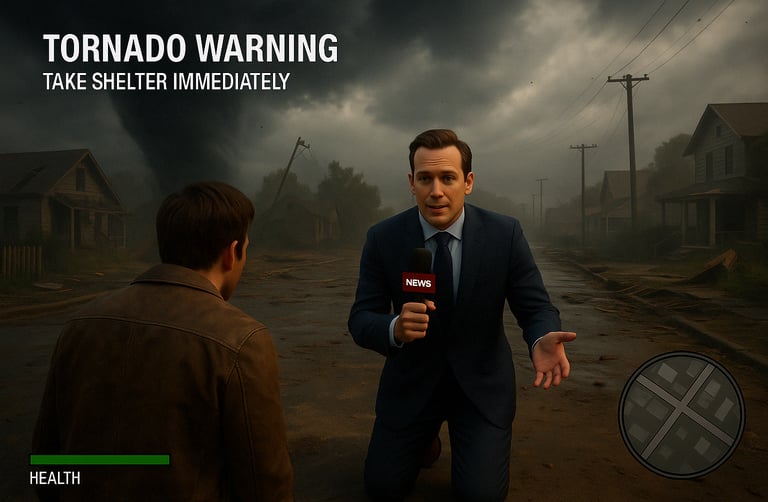

First-Person
Third-Person
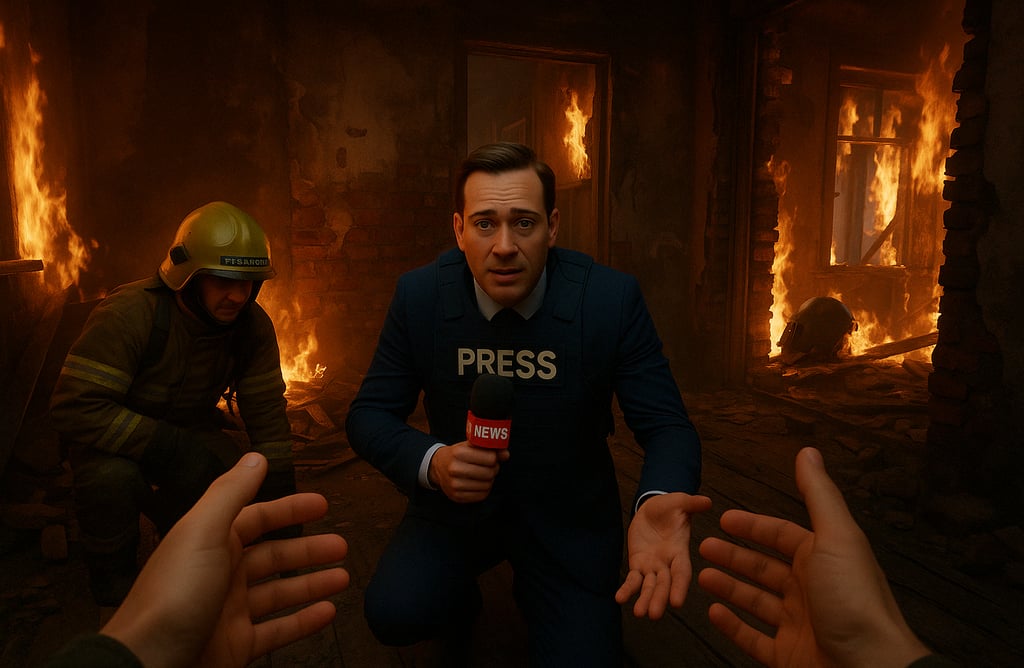

You Are Not Alone – Social Presence (Multi-Sensory News Model)
Other characters like soldiers, survivors, or reporters are around you. They talk, move, help, and explain.
This creates social presence. You feel like you are with real people. This follows the multi-sensory news model, where human interaction is a big part of the story.
A Line Between Life and Ruin – Cognitive Bridges (Cognitive Bridging Model)
In this powerful game-like scene, you are part of a police team preparing to enter a quiet suburban house. Sunlight shines through the window. Everything looks calm and normal.
But at the same time, your weapon is ready, and your mission is serious. The user interface on the screen shows health, location, and commands like “CLEAR” and “LOCATE.” You feel the pressure.
This moment creates cognitive bridges—your brain starts comparing the peaceful environment with the danger you expect inside.
Is this a safe home, or is it hiding something dangerous?
The calm outside does not match the tension inside.
This situation makes you reflect. You know how things look is not always how they are. This is exactly what the Quadruple-Dimensional Cognitive Bridging Model explains: how we connect real thoughts with virtual experiences, and how our mind moves between peace and danger, between past knowledge and new discoveries.
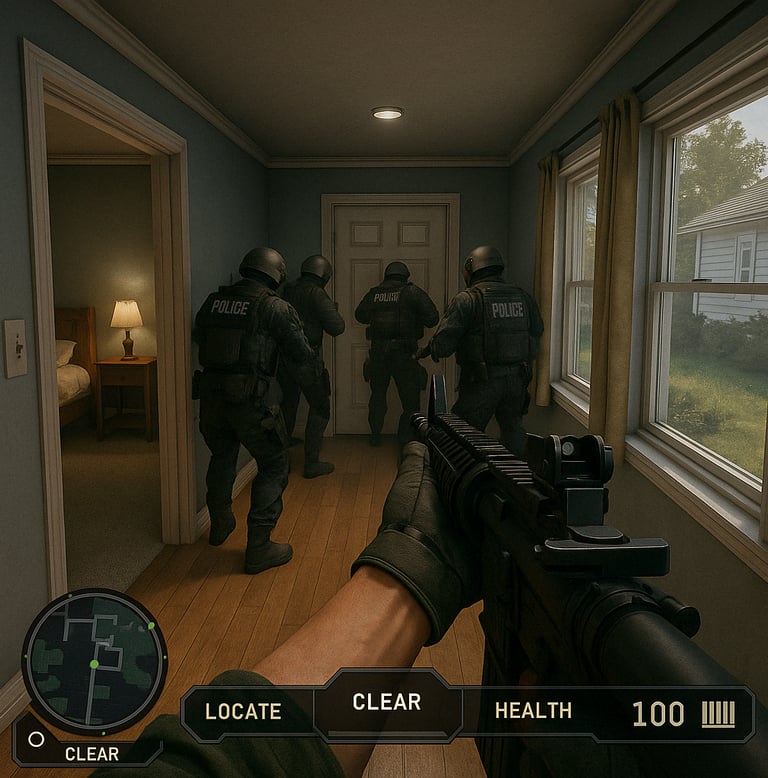

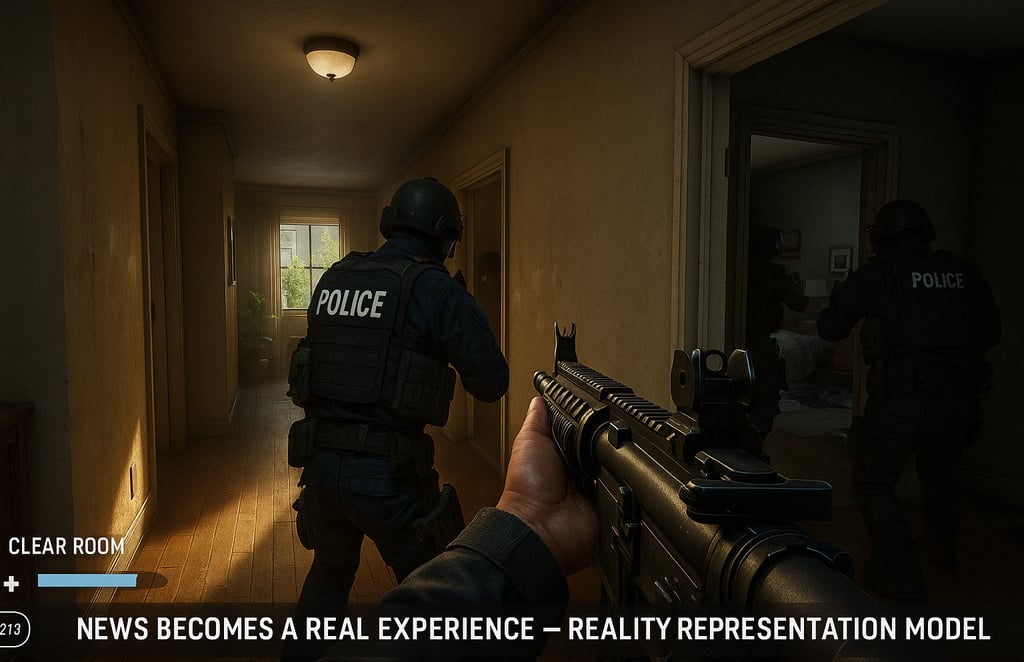

News Becomes a Real Experience – Reality Representation Model
In this intense moment, you are not just watching a police raid—you are inside it. You hold your weapon, your team moves ahead, and the hallway feels tight and real.
The sound, the light, and the layout of the house all feel familiar, like a place you might know. But now, it’s a mission.
This is what the Reality Cognitive Representation Model explains. The line between news and real life becomes thin. You are not just seeing the story—you are feeling it in your body and memory.
The user interface shows your health, task progress, and surroundings, just like in a real game. But the story is serious. It’s not fiction. It’s based on real events.
Your brain starts to mix what is real and what is virtual. This makes the experience stronger and more memorable. The news is no longer far away—it’s right here with you.
Not a Replacement, but an Evolution – Graduated Engagement Model
This new way of showing news doesn’t cancel traditional media.
It adds something better. It follows the graduated news engagement model. You start as a viewer, then become an explorer, then a full participant in the story. Step by step, your understanding grows.
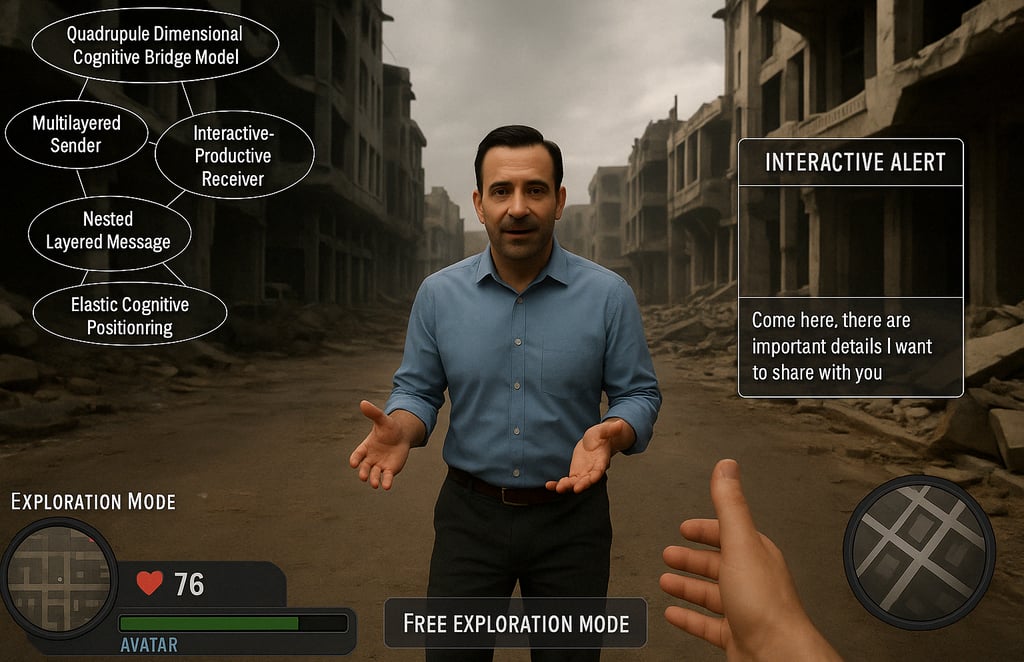

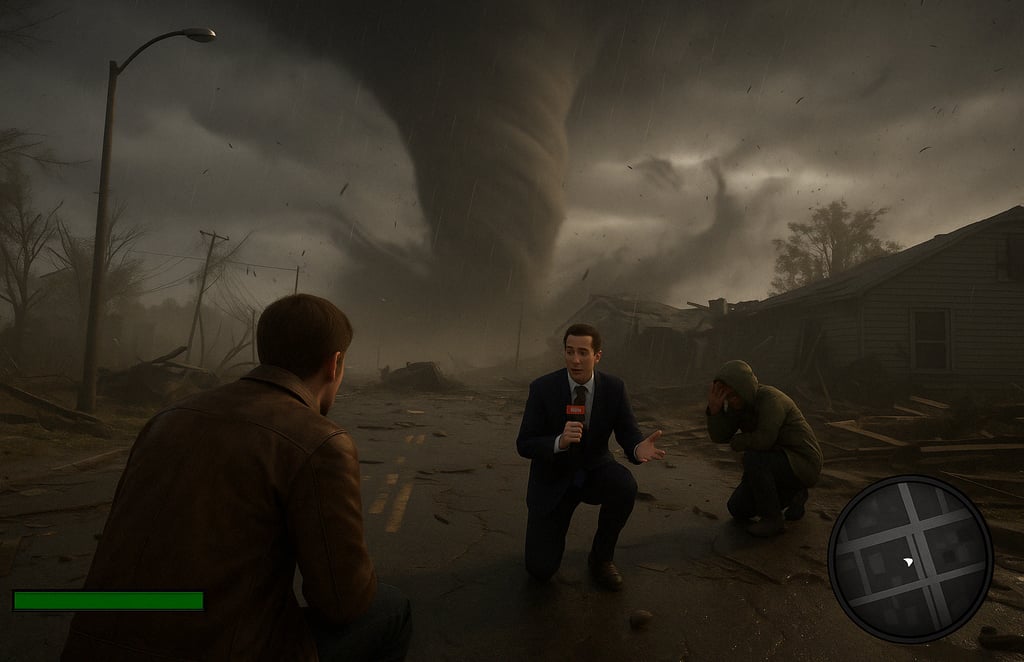

Looking Ahead – Overlapping Real and Virtual (Cognitive Bridging Model)
These early images show a future where the line between real and virtual is soft.
We see the idea of overlapping boundaries. Real events mix with virtual environments. This is a strong part of the cognitive bridging model. It helps us reimagine what “watching the news” means.